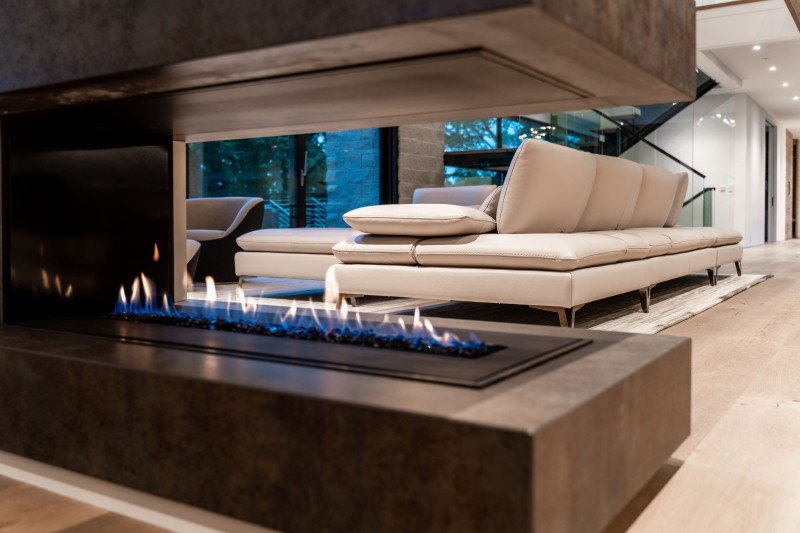5 Laws To Help The Best Value Fireplaces Industry

Best Value Fireplaces: An In-Depth Guide
The fireplace has long been considered the heart of a home, offering warmth, atmosphere, and a focal point for social gatherings. However, browsing through various alternatives can be overwhelming, particularly with budget restrictions in mind. This post presents a helpful guide on the best value fireplaces, detailing their types, features, and benefits to help homeowners make a sensible choice.
Types of Fireplaces
Fireplaces are available in a variety of designs and types, each with various characteristics, expenses, and advantages. Here's a comprehensive take a look at the most common types of fireplaces available in the market today.
| Kind of Fireplace | Description | Average Cost | Pros | Cons |
|---|---|---|---|---|
| Wood-Burning | Burn logs to develop heat and ambiance. | ₤ 1,500 - ₤ 5,000 | Genuine experience, natural heat | Requires regular upkeep, less efficient |
| Gas Fireplaces | Utilizes natural gas or lp to produce heat. | ₤ 2,000 - ₤ 5,000 | Easy to utilize, cleaner than wood | Limited to gas supply, setup costs |
| Electric Fireplaces | Imitates flames with LED innovation and produces heat via electrical power. | ₤ 200 - ₤ 3,000 | Easy installation, installation flexibility | Less genuine feel, higher operating costs |
| Pellet Stoves | Usage compressed wood or biomass pellets, providing an environment-friendly choice. | ₤ 3,000 - ₤ 4,500 | Efficient, low emissions | Requirements electricity to run, requires storage for pellets |
| Ethanol Fireplaces | Burns ethanol fuel, producing flames that don't require a chimney. | ₤ 300 - ₤ 2,500 | No vents required, portable | Greater fuel cost, security issues |
Aspects to Consider When Choosing a Fireplace
Picking the right fireplace is not practically looks; it also includes practical factors to consider. Here are vital aspects to bear in mind:
1. Spending plan
- Figure out just how much you want to invest. Keep in Best Fireplaces USA that installation and upkeep expenses can add up.
2. Area and Size
- Ensure the fireplace fits well within the room, considering both the space offered and the heating requirements.
3. Fuel Type
- Pick the fuel source based upon accessibility, expense, and the type of atmosphere you wish to accomplish.
4. Efficiency
- Select systems with high-efficiency ratings to guarantee you are getting the most value for your money in terms of heat output.
5. Aesthetic Appeal
- Choose a design and design that matches existing decoration and boosts the overall appeal of the area.
6. Laws
- Understand local regulations, allows, and structure codes that may affect your fireplace setup.
Top Best Value Fireplaces
Based upon consumer reviews, expert opinions, and total value for money, here are a few of the best value fireplaces currently readily available in the market:
1. DuraVent Pellet Stove
- Type: Pellet
- Typical Cost: ₤ 2,000
- Highlights: Highly efficient with low emissions, making it an exceptional alternative for environmentally-conscious property owners.
2. Napoleon B36NTR-1
- Type: Gas
- Average Cost: ₤ 2,500
- Emphasizes: This fireplace is visually appealing and extremely efficient, with a streamlined design and adjustable flame.
3. Duraflame Electric Heater Stove
- Type: Electric
- Typical Cost: ₤ 200
- Emphasizes: Affordable and portable, best for smaller sized areas or adding atmosphere to a room without permanent setup.
4. Genuine Flame Juliet Gel Fireplace
- Type: Ethanol
- Average Cost: ₤ 300
- Emphasizes: An elegant alternative for modern areas that needs no venting, making it flexible and simple to install.
5. Vogelzang VG5790
- Type: Wood-Burning
- Typical Cost: ₤ 800
- Highlights: Offers a traditional wood-burning experience with a streamlined modern style, best for those who value the classic atmosphere.
Often Asked Questions (FAQs)
Q1: What is the most cost-effective fireplace option?
A1: Electric fireplaces tend to be the most economical in regards to initial purchase price and setup, however can have higher operating expense compared to gas or pellet units.
Q2: Are gas fireplaces much safer than wood-burning fireplaces?
A2: Yes, gas fireplaces typically produce fewer emissions and position a lower risk of chimney fires as they don't produce creosote like wood-burning systems.
Q3: Can I set up a fireplace myself?
A3: While some electric fireplaces enable simple self-installation, other types, particularly gas and wood-burning models, normally require expert setup due to venting and security issues.
Q4: How do I preserve my fireplace?
A4: Regular upkeep consists of cleaning up the chimney (for wood-burning fireplaces), checking for gas leakages (in gas systems), and guaranteeing proper ventilation for electric designs.
Q5: Is an ethanol fireplace a good choice?
A5: Ethanol fireplaces are appealing for their modern design and ease of installation. However, Best Fireplaces USA can be less efficient and more costly to run long-lasting compared to other fuel types.
Picking a value fireplace that meets your aesthetic choices and useful requirements includes comprehensive research and factor to consider. By understanding various kinds of fireplaces, their associated expenses, and advantages, homeowners can make educated decisions that will not only fit their budget plan but also enhance the warm and inviting atmosphere of their homes. Whether going with an electric, gas, wood-burning, pellet, or ethanol model, the perfect fireplace waits for to change your home.

